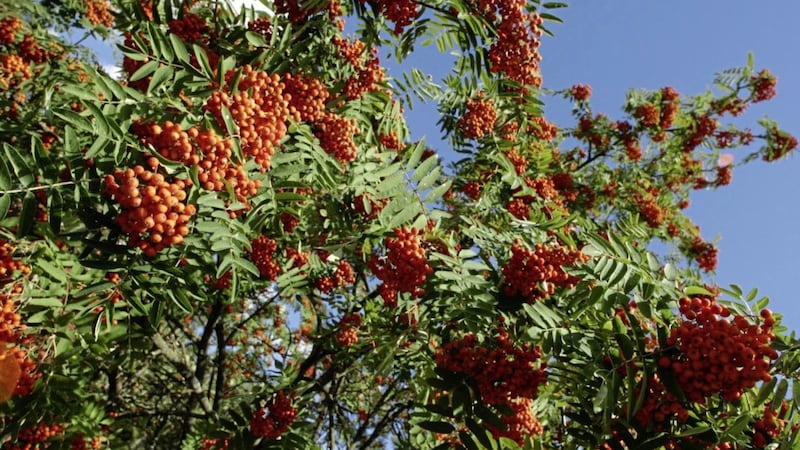AT 2AM tomorrow morning, summer time – or daylight saving time – will end for this year with the clocks going back an hour. Summer proper ended weeks ago and although we are still officially in autumn, first thing Monday morning will feel very much like winter.
Perhaps we can take some solace from the fact that there are only 55 days until the winter solstice and that crucial turn in the celestial calendar which many of us anticipate even more than Christmas.
As winter approaches, the hedgerows are stripped of their cover, revealing the bright red haws that have been developing in the months since the hawthorn’s (Crataegus monogyna) pale-pink blossom dazzled in the spring. Along side them are the hips of the dog roses (Rosa canina).
The fruits of the native hawthorn and dog rose are a bounty for wildlife, providing food for migrating birds and those who remain here in the colder months. They can also be eye-catching, as can the fruit of many of our native trees, such as spindle (Euonymus europaeus), blackthorn (Prunus spinose) and holly (Ilex), which also double as food source for birds and mammals.
If you’re planting a native woodland before next spring, give consideration to trees that fruit, for both environmental and aesthetic reasons.
Trees and shrubs with berries first come into their own as their foliage backdrop changes colour, before later in the year their fruit is presented on stark, leafless branches.
The definition of a berry can be confusing and it may surprise many readers to learn that strawberries, blackberries and raspberries, three of the most recognisable fruits, aren’t strictly speaking berries, because they develop from a single flower with more than one ovary, which means they are classified as aggregate fruits. The botanical definition of a berry is a fruit produced from the ovary of a single flower, fleshy throughout except for the seeds.
This category includes some unlikely members such as bananas and pumpkins, but also gooseberries, elderberries, blackcurrants and redcurrants. Drupes, meanwhile, are fleshy fruits that have just one seed, such as plums and sloes, the fruit of the blackthorn.
These are of course, biological classifications, which shouldn’t concern us gardeners too much. Our priority primarily is to choose the best looking and most profuse.
When seeking out ornamental autumn fruit displays it’s hard to go past the crab apple cultivars. Malus x zumi ‘Professor Sprenger’ is a free fruiting variety that bears little orange-red apples, while Malus x robusta ‘Red Sentinel’ is equally generous in its yield of bright red, cherry-like fruits that will last well into winter.
Rowans, which often provide an excellent displays of autumnal foliage as well as fruit, make the perfect medium sized tree where space is limited or where you fancy using more than one in a formal planting scheme.
Sorbus ‘Joseph Rock’ is one for brilliant autumn colour followed by yellow berries. Hailing from China, Sorbus forrestii (AKA Forrest’s Rowan) bears white flowers in spring followed by white berries tipped with pink. Also noted for its larger white berries is the Kashmir Rowan (Sorbus cashmiriana).
Berrying shrubs are equally valuable in the winter months when colour from flowers is rare. The evergreen leaves of the pyracanthas, sometimes known appropriately as firethorn, create the perfect backdrop for showing off autumn’s bright red, yellow or orange berries.
Worth checking out is Pyracantha ‘Orange Charmer', which has glossy leaves all year round and white flowers in early summer, followed by orange-yellow berries, while ‘Saphyr Rouge’ is more compact but follows a similar schedule of white flowers followed by abundant berries, only this time red in colour.








